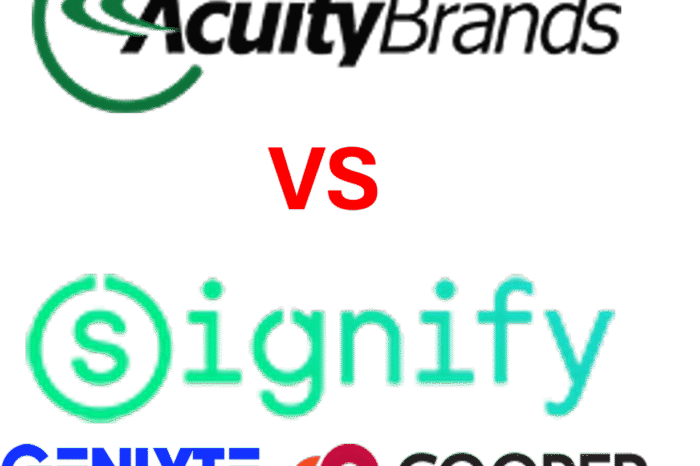Lighting Opportunities, Round-Up and Relevancy
The lighting market continues to represent some of the greatest opportunities for  distributors. At the recent NAED South-Central, every lighting manufacturer reported minimum 2015 sales increases of 20%. Goals for 2016 are the same, if not higher. The market is quickly being converted to LEDs and lighting’s functionality is being significantly enhanced as lighting electronics merge with lighting controls and software … for lighting and more. Pretty soon, if not now, the limit of lighting functionality will only be limited by imagination. With software and electronics, limitless ideas can be presented to “influencers” and end-users.
distributors. At the recent NAED South-Central, every lighting manufacturer reported minimum 2015 sales increases of 20%. Goals for 2016 are the same, if not higher. The market is quickly being converted to LEDs and lighting’s functionality is being significantly enhanced as lighting electronics merge with lighting controls and software … for lighting and more. Pretty soon, if not now, the limit of lighting functionality will only be limited by imagination. With software and electronics, limitless ideas can be presented to “influencers” and end-users.
The question our friend Chris Brown has asked is “will distributors remain relevant in this market?”
While the answer is “yes and no”, the question becomes, will it be profitable. The “yes” element is for smaller projects and those replacements (or new construction) that don’t require much design / recommendations. The remainder is questionable.
And part of the reason is the pace of change in the industry, the emergence of many new players and channel entities that distributors don’t know that they compete against, distributor willingness to invest in the pertinent talent and tools, the willingness to charge for value in services and understanding that the unit cost per fixture will decline as LEDs / electronics decline, hence the need to prospect and develop new business rather than selling the same amount as before (think about the copper wire business … sell more to make less!)
And we haven’t touched on the lamp replacement market with LEDs eventually declining to CFL prices with greater longevity but an ever quicker product development cycle. Who wants to carry inventory?
With above as a backdrop, below are some lighting tidbits from the past month or so. Consider it a partial “Lighting Round-Up”:
- Philips and 2 PE firms? Here’s an article from the Wall Street Journal mentioning that Blackstone and Onex Corp have bid for Philips Lighting. We’ve also shared before that there are Chinese companies interested as are Apollo Global Management and Melrose Industries. According to a Philips spokesman “Philips is on track to be able to announce the separation of the Lighting business in the first half of 2016.” The division had 2015 sales of 7.6 billion euros. The question is, which is better for distributors – Philips being owned by a private equity firm or a Chinese company? Or does it make a difference? How do you think Philips will change with new ownership? More committed to channel? Less? Make investments or pull out dividends (typical PE strategy while seeking some growth before “flipping” – to another company or via an IPO)
- Cree launches Essentia. According to this article, Cree’s new Essentia product line / brand is “a new brand of commercial lighting products that offer a broad range of high quality lighting solutions at a great value. Created in response to market demand …” with a focus on ” track lighting, downlights, exit and emergency lighting, flat panel troffers, and outdoor flood and area lighting.” It sounds like a price line as a means to be more competitive or perhaps for certain channels. It will be interesting to see how this gets marketed to differentiate it from “Cree” and understand why distributors would carry both (unless Essentia is essentially commodities and Cree is the spec line?) Can anyone share insights?
- Graybar effectively marketing to facility executives. Graybar recently conducted a webinar with Acuity focused on intelligent lighting solutions for warehouses. Then, to focus on the target market, they are marketing it to facility executives and getting them to watch the video after the fact, hence extending the life of the webinar. You can view it here. This reinforces what we said at the top, distributors need to be aggressive in pursuing the opportunity. Every distributor should have a lighting / energy efficiency marketing plan … and its more than having your salespeople mentioning lighting or asking for the business. Lighting is one of the few segments where distributors can create demand to achieve their revenue objectives.
- Strategies in Light Takeaways. Dave Schiller from Lighting Solution Development attended the Strategies in Light / The LED Show last week. He shared his top 11 takeaways. A couple that are more market / channel related are:
- 2015 saw 50% price erosion on LEDs — If you achieved 100% growth in units, you’ve accomplished no business growth with 50% price erosion. I was told by two sources that mid-powered LEDs in high volume are now sub-$0.05 per LED. Manufacturers at all integration levels MUST find value-added approaches! (while it is not a 100% correlation to what distributors see, every distributor sees the pricing on LEDs (lamps and fixtures) declining. The premium that there once was, and barrier to selling, has declined.)
- DLC V4.0!? — DLC recently announced revision of their Technical Requirements for version 4.0. No, I’m not talking about the just finalized version 3.0, that introduce “DLC Premium.” They just finished 3.0 and now they have proposed a spec for 4.0!!! Many are not happy. How is a manufacturer to recoup their investment in developing 3.0 products? (if you’re a distributor and not familiar with DLC, you need to be. And know the version if you want to converse with “influencers”. The manufacturer recoupment issue is the price that manufacturers pay for this becoming an electronic product … constant product development and product innovation.)
- 4.5% CAGR For LEDs & LED Lighting — This is a significantly downward revised CAGR through 2020. Why? Because of price erosion. LED adoption is brisk, but largely undermined by price erosion. (This must be a shocker for many distributors but it is the unit vs price conundrum. Those on the front end of the sale have the opportunity to make money, otherwise it is a bidding game and little room for value-add.)
- Distributor-Direct Lighting Rebates – Are you in one of these states – AR, CA, CO, CT, HI, IL, IN, MA, MD, ME, MN, OH, OR, UT, VT, WA, WV? If so, your utility may offer distributor-direct lighting rebates for commercial projects. These can be for projects, renovations and screw-in lamps.
- Cisco’s Digital Ceiling. By now everyone knows about Philips’ relationship with Cisco. This has expanded with Cree and Eaton Lighting Solutions joining, what Cisco calls, is the Digital Ceiling. So, is Cisco solely the pathway, the infrastructure, the highway for the future of PoE lighting? Will they facilitate the fragmentation of the lighting distribution channel by enabling many other entities to become channels? Essentially if someone knows how to program, they can get someone to install a fixture (essentially low voltage, perhaps building codes end up changing?). Here’s some more on each company’s entry into this “relationship”:
- From the Triangle Business Journal – Baekelmans, Cisco’s London-based chief technology officer for the Internet of Everything Solutions Group, says Cisco’s RTP headcount and its proximity to Cree’s Durham headquarters have been “instrumental” in its partnership, aimed at combining Cree’s smart lighting technology SmartCast with Cisco’s ethernet prowess. Specifically, Cisco’s RTP campus is where the end-to-end validation and testing efforts happen for the partnership, which allows Cree lights to be powered solely by ethernet cabling in your ceiling.” And as Cisco was scanning the LED Market, “we could not get past Cree,” he says. He thinks Cree’s lighting contribution could just serve as the entry point for a bigger partnership. The goal is to make lighting and building automation capabilities work together – even technologies that haven’t been conceptualized yet. And already, the partnership is establishing a protocol for further Internet of Things innovations, he says. (could become a deeper relationship for product development? other areas?)
- And here’s a couple of other links re Cisco and Cree
- Ethernet cables used for much more than power and Internet for homes and businesses
- Cree, Cisco and the Mobile (AL) Public School System (which begs the question of “was a distributor involved in providing either the concept (doubtful), fixtures (hopefully), any additional ethernet cabling (possibly) and/or other material? Perhaps a Mobile (AL) distributor can let us know? – and there could be a good reason why not? Perhaps Cree could advise?)
- Here’s information about the overall strategy – Berlin Digital Ceiling Launch
- What to learn more about Cisco’s Digital Ceiling Initiative and its partner program? Click here. Other than fixture companies (and Eaton Lighting Solutions is involved, so, for right now that leaves out Hubbell Lighting and Acuity as “major” players, Molex, through their Molex Connected Lighting division) and Superior Essex are involved as well as Johnson Controls and some PoE manufacturers. Perhaps Leviton, Legrand, Lutron will get involved?
- Acuity pursues parking garages – Acuity shared this case study / pilot project at two parking garages. This could be a significant market. And consider if it expanded, through a frequent parker program, so that you parked in a slot and the system emailed you were your car was parked? Perhaps it could take a photo of your license plate for security reasons (so car isn’t stolen from garage)? Maybe the system directs you to open slots? Or maybe lights remain off if there are no openings in that area … or change to red for no vacancy and green for vacancy. Options, options, options. So, who sells these systems / options? Who is best marketing to this audience?
- High Bays – Did you know that, according to Navigant Research, global sales of high-bay luminaires and lamps are expected to peak at almost $23.5 billion in 2017 and then decline to $20.4 billion in 2024. Improved efficiency and lighting controls are also impacting this market.
Lighting has become an every changing market. For your company to take advantage of these opportunities, you need more than one or two specialists. You need a product category champion. A “train the trainer” philosophy and you need to decide if you want to seize the market and market to capture more than your share or are content to quote projects and retain historically lighting project margins. Both are viable. The determinant is your goal for your company.
What are you seeing? How are you responding?




















